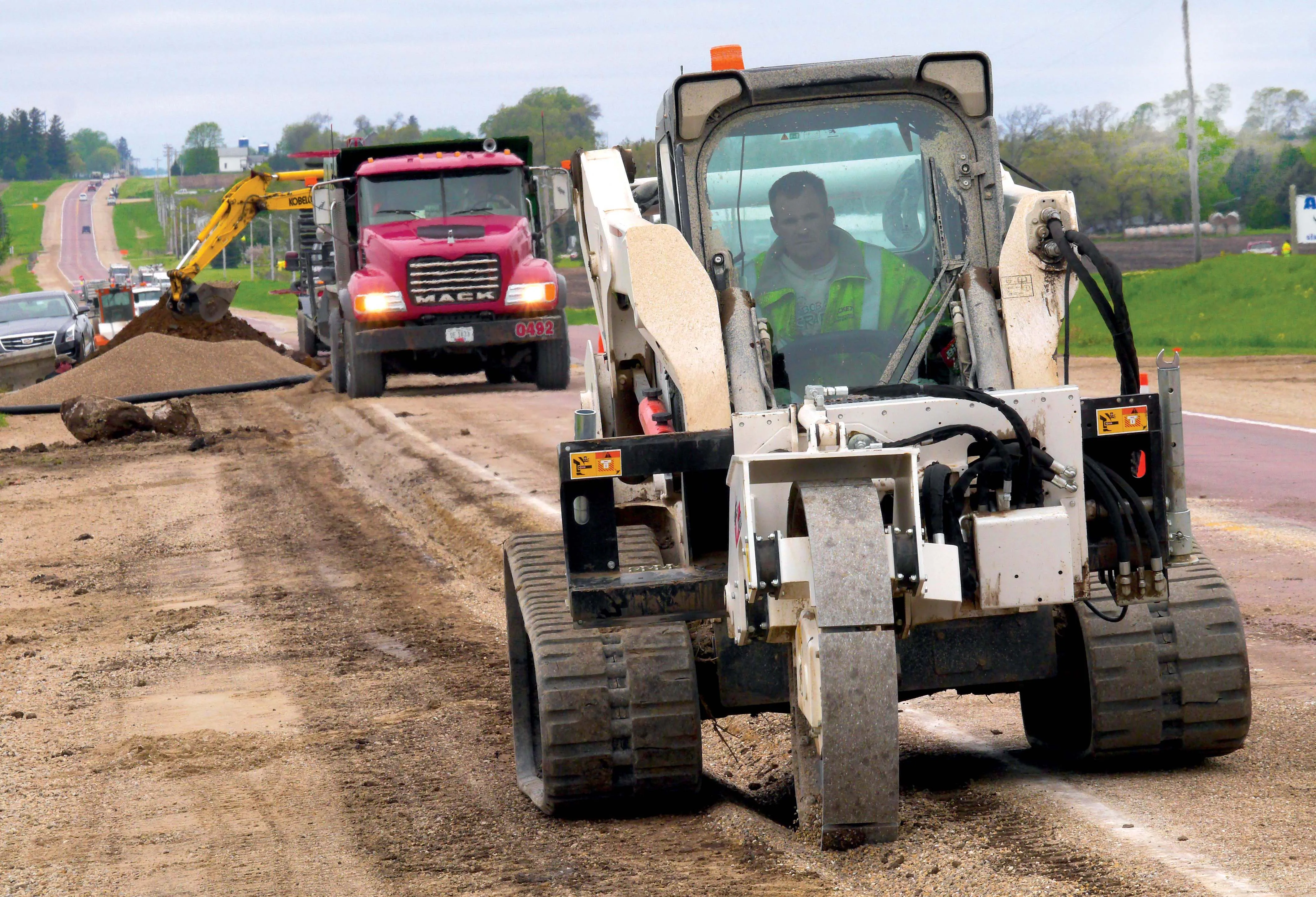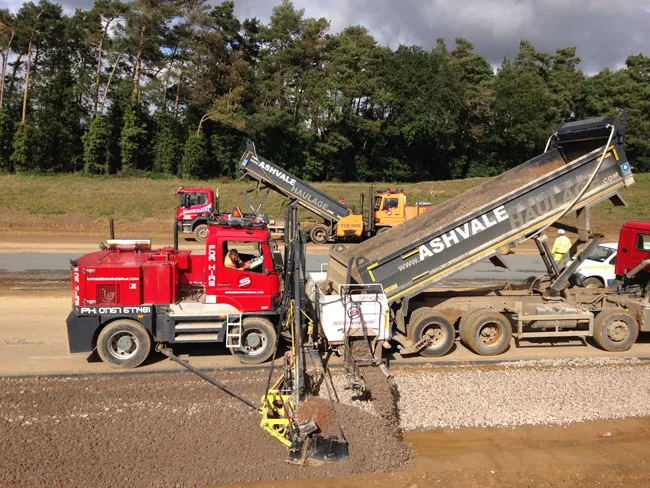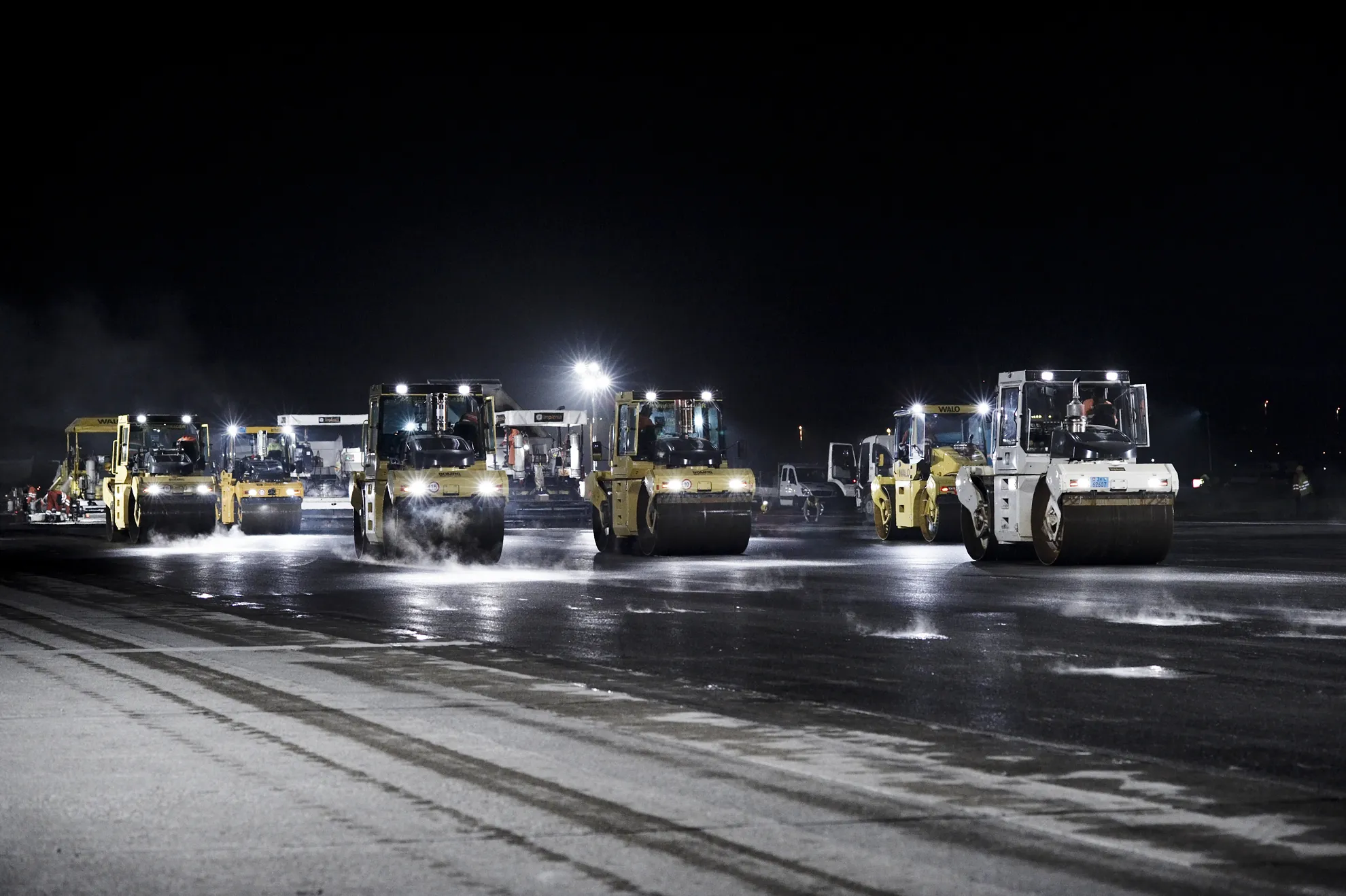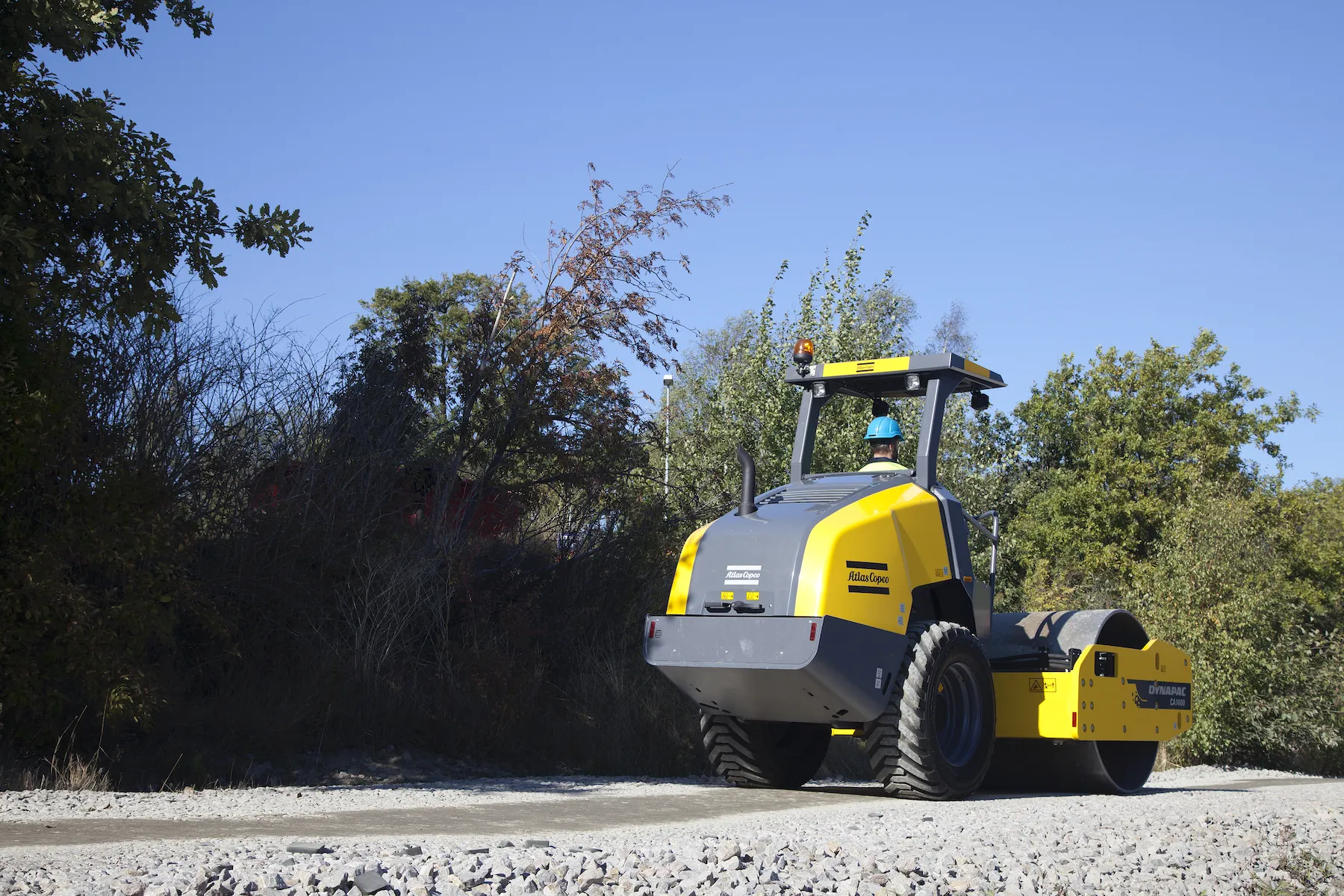In Iowa, the Simex CT 2.8 vibrating compactor wheel is playing an important role in building a subsurface, road drainage system
The topsoil of Iowa is famous for its fertility, a characteristic that explains the high agricultural productivity of this state located in the American Midwest. However, the composition of the soil lends itself poorly to the dispersal of rainwater, as its fine granulometry and low level of permeability (12.7cm/hour according to the American Association of State Highway and Tran
August 17, 2015
Read time: 4 mins

In Iowa, the Simex CT 2.8 vibrating compactor wheel is playing an important role in building a subsurface, road drainage system
The topsoil of Iowa is famous for its fertility, a characteristic that explains the high agricultural productivity of this state located in the American Midwest. However, the composition of the soil lends itself poorly to the dispersal of rainwater, as its fine granulometry and low level of permeability (12.7cm/hour according to the3510 American Association of State Highway and Transportation Officials (AASHTO) indexes) make for unfavorable conditions in a downpour. Add to that, Iowa sees an average yearly precipitation of more than 50cm, and that explains why the drainage of subsurfaces of big and small roads alike is important for road durability and traffic safety.
As part of a general plan including heavy investments in new road infrastructure as well as the upgrading and maintenance of older roads, the1229 Iowa Department of Transportation (DOT) is undertaking a series of works designed to improve the dispersal of water that can accumulate in road subsurfaces. The tried-and-true technique used for years on existing roads is to install drainage along the shoulders with installation of 102mm diameter pipes that collect the water and convey it into culverts. From there the water flows through larger pipes and is expelled laterally far from the roadbed.
For the last three decades, Rockette Trucking and Construction, located in Strawberry Point, Iowa has performed excavation, backfilling, shouldering and other types of roadworks throughout the state. Rockette was recently called by the Iowa DOT to lay drainage systems for a total of more than 18km. Excavation of the trench along the shoulders on certain roads can reach a depth of 1.22m, with the trench installed with pipes and subsequently filled with gravel. The company had developed an efficient method for trenching and laying the polypropylene drainage pipe. But the problem remained of assuring an efficient system of compaction that would guarantee compliance with project specifications and the productivity required to operate without the pace of work slowed down. Rockette found a solution in their purchase of a1141 Simex CT 2.8 vibrating compactor wheel.
On County Road 48 Rockette Trucking and Construction has been using the equipment recently, where it has helped to speed up the process of laying the drainage system. The firm has developed an efficient method for laying the pipe and backfilling. But it explained that, in the past, compaction of the backfill has slowed its working. With the Simex unit, however, the firm has now found a tool that can handle the compaction process productively and fits on to its versatile compact tracked loader.
Utilisation is also high, as when the compaction wheel is not required, the tracked loader can use its bucket for general handling duties, or carry out other tasks with other attachments.
Efficient compaction is the result of several factors. In the case of vibrating attachments this depends directly on the frequency and amplitude (amplitude should be higher if the soil composition has a clay and sand matrix, lower for material with a rocky matrix). The weight of the compaction system, and of course the speed of compaction, which when maintained is constant and not excessive, leads to better results. These general criteria are also applied to the compaction of filler material in narrow trenches, such as small utility networks, or in the case of Iowa trenches, for installing drainage pipes.
The Simex CT 2.8 compactor wheel with interchangeable sectors can operate with vibration frequencies of 30-40 Hertz with an amplitude of 0.8-1.4 mm and a maximum dynamic vertical force of 33kN and a maximum vertical force of 42kN. The attachment can also fit sectors with a width of 150-400 mm to reach a maximum depth of 70cm. And thanks to wheels and special interchangeable elements supplied on request, the CT 2.8 can also operate in trenches with a width of 50-200mm at a depth of 35cm.
The CT 2.8 is available in various options; in the full optional model the compactor wheel offers the advantage of side shifting for 1100mm, allowing the prime mover to advance offset from the trench (400mm offset from the track or wheel of the machine). This feature enables compaction of the material even when space restrictions make it impossible for the machine to directly straddle the trench. In the boom version the attachment can be mounted on excavators and backhoes.
The topsoil of Iowa is famous for its fertility, a characteristic that explains the high agricultural productivity of this state located in the American Midwest. However, the composition of the soil lends itself poorly to the dispersal of rainwater, as its fine granulometry and low level of permeability (12.7cm/hour according to the
As part of a general plan including heavy investments in new road infrastructure as well as the upgrading and maintenance of older roads, the
For the last three decades, Rockette Trucking and Construction, located in Strawberry Point, Iowa has performed excavation, backfilling, shouldering and other types of roadworks throughout the state. Rockette was recently called by the Iowa DOT to lay drainage systems for a total of more than 18km. Excavation of the trench along the shoulders on certain roads can reach a depth of 1.22m, with the trench installed with pipes and subsequently filled with gravel. The company had developed an efficient method for trenching and laying the polypropylene drainage pipe. But the problem remained of assuring an efficient system of compaction that would guarantee compliance with project specifications and the productivity required to operate without the pace of work slowed down. Rockette found a solution in their purchase of a
On County Road 48 Rockette Trucking and Construction has been using the equipment recently, where it has helped to speed up the process of laying the drainage system. The firm has developed an efficient method for laying the pipe and backfilling. But it explained that, in the past, compaction of the backfill has slowed its working. With the Simex unit, however, the firm has now found a tool that can handle the compaction process productively and fits on to its versatile compact tracked loader.
Utilisation is also high, as when the compaction wheel is not required, the tracked loader can use its bucket for general handling duties, or carry out other tasks with other attachments.
Efficient compaction is the result of several factors. In the case of vibrating attachments this depends directly on the frequency and amplitude (amplitude should be higher if the soil composition has a clay and sand matrix, lower for material with a rocky matrix). The weight of the compaction system, and of course the speed of compaction, which when maintained is constant and not excessive, leads to better results. These general criteria are also applied to the compaction of filler material in narrow trenches, such as small utility networks, or in the case of Iowa trenches, for installing drainage pipes.
The Simex CT 2.8 compactor wheel with interchangeable sectors can operate with vibration frequencies of 30-40 Hertz with an amplitude of 0.8-1.4 mm and a maximum dynamic vertical force of 33kN and a maximum vertical force of 42kN. The attachment can also fit sectors with a width of 150-400 mm to reach a maximum depth of 70cm. And thanks to wheels and special interchangeable elements supplied on request, the CT 2.8 can also operate in trenches with a width of 50-200mm at a depth of 35cm.
The CT 2.8 is available in various options; in the full optional model the compactor wheel offers the advantage of side shifting for 1100mm, allowing the prime mover to advance offset from the trench (400mm offset from the track or wheel of the machine). This feature enables compaction of the material even when space restrictions make it impossible for the machine to directly straddle the trench. In the boom version the attachment can be mounted on excavators and backhoes.









